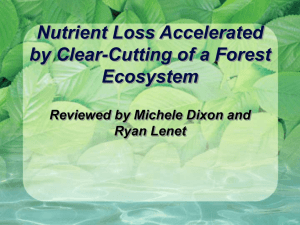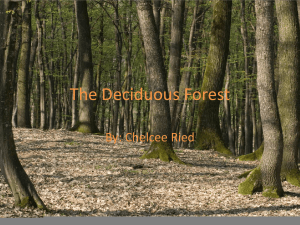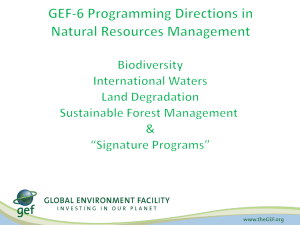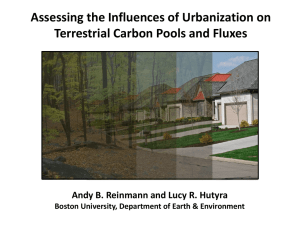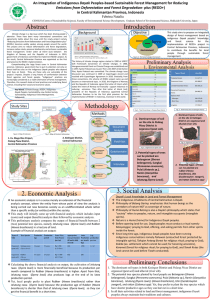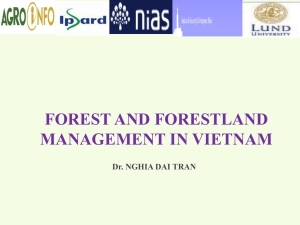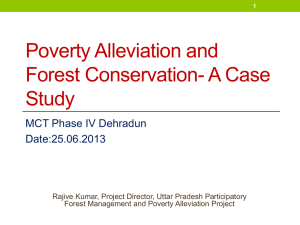Walk and Talk Experiences
advertisement
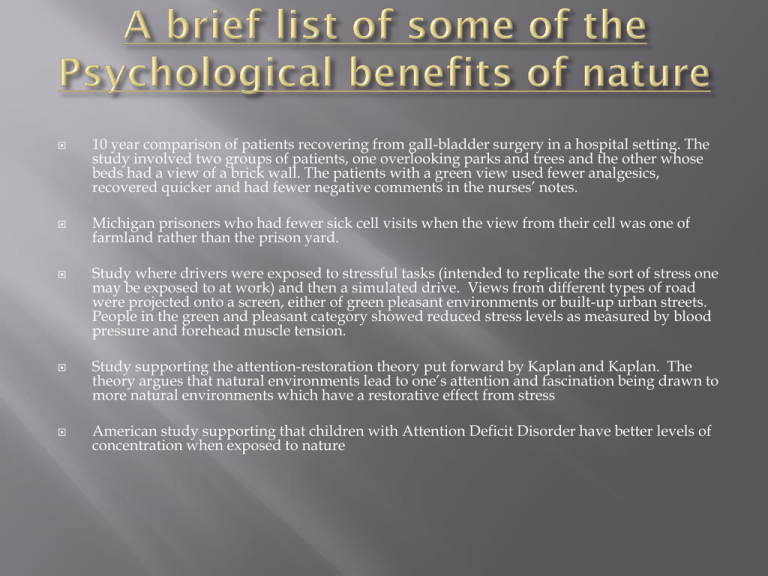
10 year comparison of patients recovering from gall-bladder surgery in a hospital setting. The study involved two groups of patients, one overlooking parks and trees and the other whose beds had a view of a brick wall. The patients with a green view used fewer analgesics, recovered quicker and had fewer negative comments in the nurses’ notes. Michigan prisoners who had fewer sick cell visits when the view from their cell was one of farmland rather than the prison yard. Study where drivers were exposed to stressful tasks (intended to replicate the sort of stress one may be exposed to at work) and then a simulated drive. Views from different types of road were projected onto a screen, either of green pleasant environments or built-up urban streets. People in the green and pleasant category showed reduced stress levels as measured by blood pressure and forehead muscle tension. Study supporting the attention-restoration theory put forward by Kaplan and Kaplan. The theory argues that natural environments lead to one’s attention and fascination being drawn to more natural environments which have a restorative effect from stress American study supporting that children with Attention Deficit Disorder have better levels of concentration when exposed to nature Work by Lancaster University commissioned by the Forestry Commission shows that older children (16-21) seek out the outdoors for dealing with stress. A study of over 3,000 elderly people living in a built-up area in Japan found that the probability of survival over a five-year period increased with the amount of accessible green space close to peoples’ place of residence and the perceived ability to take a stroll in tree lined streets and parks. A cross-sectional study involving 10,000 people in the Netherlands –People with more green space in their living environment judged themselves to be healthier and reported fewer health-related complaints. Even small green spaces in cities leads to improvement in children’s abilities to pay attention, delay gratification, and manage impulses Evidence that contact with nature reduces symptoms associated with Attention Deficit-Hyperactivity Disorder in children. Hardiness (a combination of internal locus of control, appreciation of challenge as opportunity, and commitment to self) moderates the negative effects of stress and strengthens the existential dimensions of psychological health. Studies show that many kinds of nature experiences will increase a sense of hardiness. Successfully meeting challenges, a feature of virtually all wilderness experiences, leads to self-confidence and improved self esteem. Coherence (connectedness, wholeness and meaningfulness) is related to better mental health and reduced negative stress. Direct encounters with intact, healthy ecosystems leads to a greater sense of psychological coherence Survey results on frequency and triggers for peak experiences (Maslow – experiences of optimal mental health) shows that nature is the most common trigger for peak experiences Studies of environmental preference show that natural environments (when compared to built environments) tend to provide more of the characteristics preferred in an environment. Psychological health arises from being in a more-preferred environment. Therefore, psychological health can be expected to increase with contact with more-preferred (natural) environments. Jung: “The fact is that the approach to the numinous (being, essence or true nature) is the real therapy and inasmuch as you attain to the numinous experiences you are released from the curse of pathology” (1973) Taken from psychological Benefits of Nature, Experiences, Research and Theory. John Davis PHD. Naropa University Shinrin-Yoku – Forest Bathing (broadly defined as “taking in, in all of our senses, the forest atmosphere”. In 1982, the forest agency of the Japanese government premiered its shinrin-yoku plan. The program was established to encourage the populace to get out into nature. In 1990 a small study was set up in the Yakushima forests. The experiment was to compare the impact of walking for 40 minutes. One group walked in the cedar forest while the other walked in a laboratory. The reported benefit of the forest walk was on improved mood and feelings of vigour. This study backed up the subjective reports with the findings of lower levels of the stress hormone cortisol in subjects after forest walks compared with those who took the laboratory walks. Since then, university and government researchers have collaborated on detailed investigations, including projects to evaluate physiological markers while subjects spend time in the forest. Data from over 1,000 subjects has been compiled in Japan. These combined studies have confirmed that spending time within forest settings can reduce psychological stress, depressive symptoms, and hostility, while at the same time improving sleep and increasing both vigour and a feeling of liveliness. These changes match up nicely with objective results reported in nearly a dozen studies involving 24 forests – lower levels of cortisol (stress hormone) and lower blood pressure and pulse rate. Studies show: Increased heart rate variability – this allows the circulatory system to respond well to stress. The time-resolved spectroscopy system (TRSS) device allows for a reading of oxygen use in the brain via the reflection of near-infared light off red blood cells. The Japanese researchers found that 20 minutes of shinrin-Yoku altered cerebral blood flow in a manner that indicates a state of relaxation. More specifically, the total haemoglobin levels are jacked up in this area during anticipation of threat (stress). A decease in levels means the brain is taking a time-out while in the forest. (Cortisol) Stress hormones compromise immune defence; in particular, the activities of frontline defenders, such as antiviral natural killer cells, are suppressed by stress hormones. Forest bathing can have a long lasting influence on immune markers. Specifically there were marked increases in the number of natural killer cells, increases in the functional activity of these antiviral cells, and increases in the amount of intracellular anticancer proteins. The natural chemicals secreted by evergreen trees, collectively known as phytoncide, have also been associated with improvements in the activity of our front-line immune defenders. Mycobacterium vaccae, has been found to trigger the release of seratonin, which in turn elevates mood and decreases anxiety. And on top of that, this little bacterium has been found to improve cognitive function and possibly even treat cancer and other diseases. Mary O’Brien, an oncologist at Royal Marsden Hospital inoculated lung cancer patients with a strain of M. vaccae to see if their symptoms improved. She noticed that in addition to fewer cancer symptoms, patients also demonstrated an improvement in emotional health, vitality, and even cognitive function. Dr. Chris Lowry, at Bristol University hypothesized that the body’s immune response to the bacterium causes the brain to produce seratonin. He injected mice with the M. vaccae. He found that cytokine levels rose – cytokines are part of chain reaction, the end result of which is the release of seratonin. To test behavioral stress levels, Lowry put the mice into a miniature swimming pool, knowing that although stressed mice get even more stressed by swimming, unstressed mice actually enjoy it. And voila! His M. vaccae mice swam around like happy little ducklings. Not everything that counts can be counted, and not everything that can be counted counts” Albert Einstein.




